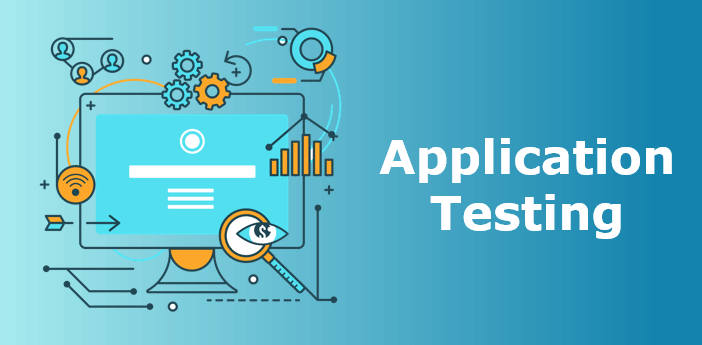The Art of Testing Application Programming Interfaces (APIs)
 Sanjeet Singh
Sanjeet SinghIn today's interconnected world, applications seamlessly communicate with each other, sharing data and functionality through APIs (Application Programming Interfaces). Imagine a well-maintained bridge enabling smooth traffic flow. Similarly, a well-tested API ensures reliable communication between applications. But how do we ensure these bridges are built strong and function flawlessly? This is where the art of API testing comes in.

Understanding APIs: The Waiter in the Digital Kitchen
Think of an API as a waiter in a restaurant. You (the application) tell the waiter (the API) what you want (data or functionality). The waiter retrieves it from the kitchen (the other application) and brings it to you. Just like the waiter doesn't need to know how the food is prepared, applications using an API don't need to understand the other application's internal workings. They simply interact with the API to get the desired results.
Why Test APIs? Preventing Traffic Jams and Frustration
Just like a poorly maintained bridge can lead to traffic jams and accidents, a faulty API can disrupt communication between applications, causing cascading errors and frustrated users. Here's why API testing is crucial:
Ensures Functionality: Testing verifies if the API delivers the expected data or performs the requested function correctly.
Guarantees Reliability: A well-tested API ensures consistent performance and prevents unexpected behaviour.
Improves Security: Testing helps identify vulnerabilities in the API that could be exploited by hackers.
Enhances User Experience: Reliable and secure API communication translates to a smooth and seamless user experience.
Reduces Development Costs: Early detection of API issues during testing saves time and resources compared to fixing them later.
The API Tester's Toolbox: Beyond Just Tools
While tools play a vital role in API testing, the human element remains irreplaceable. API testers bring critical thinking, problem-solving skills, and an understanding of the business context to the table. They:
Design Effective Test Cases: Crafting scenarios that simulate real-world usage is crucial for comprehensive testing.
Interpret Results and Identify Edge Cases: Tools provide data, but testers use their expertise to analyse results, identify potential issues, and design tests for unexpected scenarios.
Collaborate with Developers: Effective communication between testers and developers is key to resolving issues and improving the overall API experience.
A Glimpse into the API Tester's Toolbox
Here's a look at the various techniques and tools API testers use:
Functional Testing: Tools like Postman and SoapUI help simulate requests and analyse responses, ensuring the API performs its intended actions accurately.
Security Testing: Tools like Burp Suite and OWASP ZAP help uncover weaknesses in authentication, authorization, and data encryption, identifying and mitigating potential security vulnerabilities.
Performance Testing: Tools like JMeter and LoadRunner simulate heavy traffic and measure response times, evaluating the speed and stability of the API under different load conditions.
Compatibility Testing: Emulators and simulators help test compatibility, ensuring the API functions flawlessly across different platforms and devices.
Documentation Testing: Testers ensure the API documentation accurately reflects the API's behaviour, creating clear and accurate documentation for developers using the API.
The Future of API Testing: Building Bridges for Tomorrow
As APIs become more complex and functionalities evolve, so will the art of API testing:
Shift-Left Testing: Integrating API testing earlier in the development lifecycle will lead to faster issue detection and resolution.
Increased Automation: Advanced tools will streamline repetitive tasks and allow testers to focus on strategic areas, while automation cannot replace human expertise.
API Security Focus: As security threats become more sophisticated, API testing will place a greater emphasis on identifying and mitigating vulnerabilities.
The Final Note: The Invisible Bridges of Our Digital World
Mastering the art of API testing ensures that applications communicate seamlessly, thereby fostering a robust digital ecosystem. Well-tested APIs serve as the foundation for creating applications that are reliable, secure, and user-friendly. The next time you interact with an application, take a moment to appreciate the invisible bridges – the APIs – that enable its functionality. These bridges are crafted and maintained through dedicated API testing practices.
Furthermore, a software testing certification course in Gurgaon, Delhi, Mumbai, and other parts of India, equips individuals with essential skills in software testing, including API testing techniques. These skills are crucial for enhancing application reliability and contributing to the development of resilient digital infrastructures in modern businesses.
Subscribe to my newsletter
Read articles from Sanjeet Singh directly inside your inbox. Subscribe to the newsletter, and don't miss out.
Written by

Sanjeet Singh
Sanjeet Singh
I am Sanjeet Singh, an IT professional with experience in the IT sector. I have a broad understanding of Data Analytics and proficiency across multiple layers of software development and testing, from the front end to the back end.